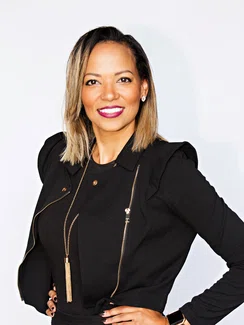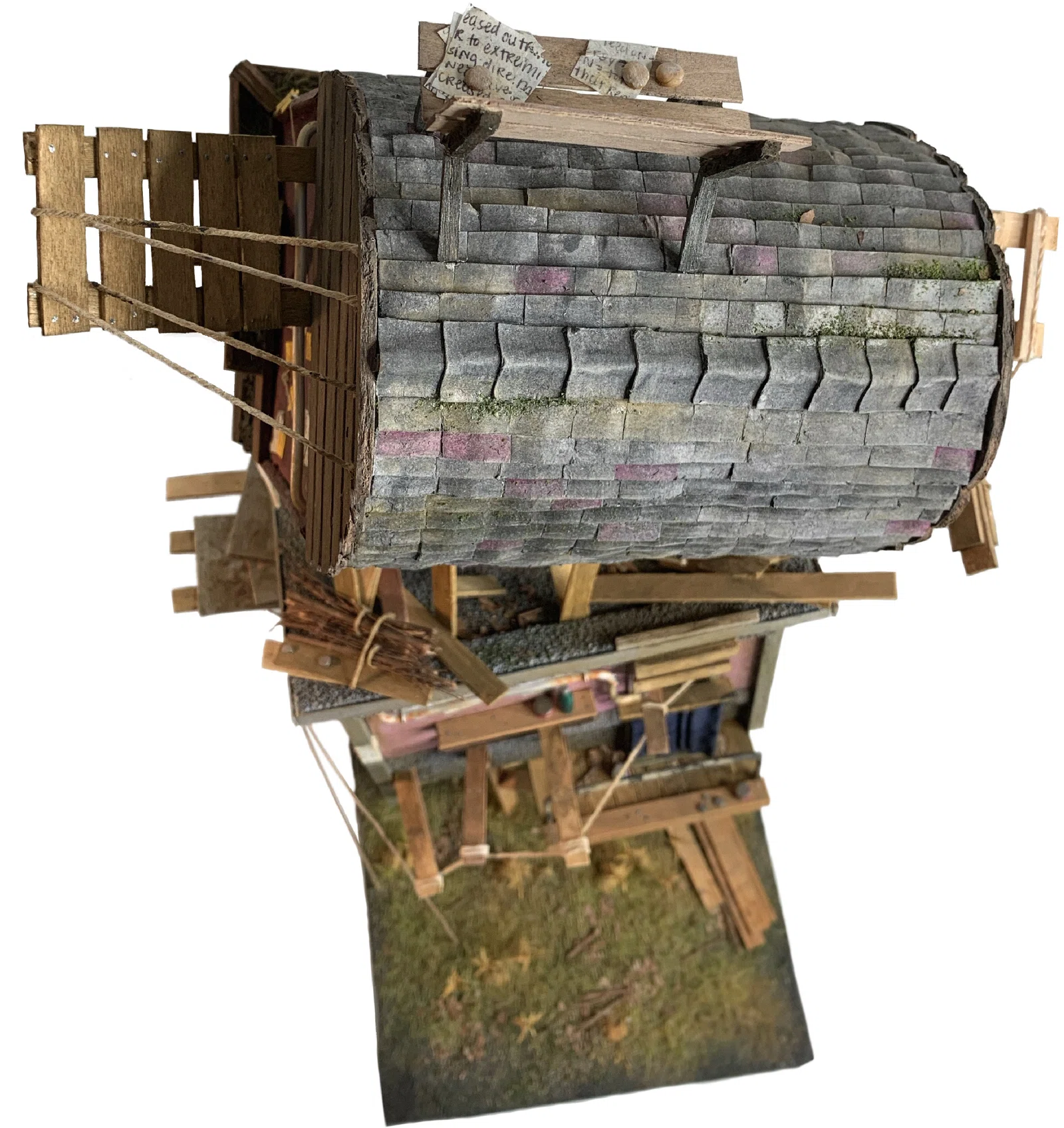





3-D Design
Lucy Brown
Booker T. Washington|Dallas, Texas

Untitled|19 x 7 x 11 in.
Materials: Cardboard, fabrics, acrylic paint, aluminum armature wire, found materials, various woods, plastics.
Curatorial Note: Self-exploration through the physical manipulation and distortion of objects that connect to oneself, home.
Distortion of the house reflects discontent and dehumanization of oneself. Balance, shape, and form are addressed successfully with various materials.


“Within my concentration, I attempt to explore the concept of individual personality and the manipulation of self-personality in a social and private setting. Specifically, my work focuses on how one presents and views themself, and the overall concept of personality and identity within that context.”

Student statement
Student
statement
Within my sustained investigation, I explored the concept of individual personality and the manipulation of self in a social and private setting; specifically, my work focuses on how one presents and views themself, & the overall concept of personality and identity within that context. This exploration is partly in relation to my own struggle with identity—something which was compounded by COVID. Under quarantine and isolated, I found myself misguidedly adopting the belief that I had lost the things that made me interesting or even noteworthy. And due to that state of mind, amidst confusion over sexual orientation and identity, I struggled to personally recognize or distinguish myself in a way I found meaningful—which further resulted in the deterioration of my own self-worth, image, and mental state. Many of my other works at the time reflect this, as that work was to represent what I thought I was- an amalgamation of distorted human characteristics and artificial objects- rather than what I was going through.


Lucy Brown
This work was created to the extent of utilizing rubbish and throwaway materials like cardboard, thread, gravel, plastic bags, and wood scrap—which I felt were best suited to represent my self-image at the time. The piece was constructed with a little forethought, beyond a general concept, as I wanted its composition to feel entirely unnatural and awkward. I built the structure from the base up, ensuring the work seemed unsteady and stilted- as furthered by its overall unnatural form. Once the base of the work was complete, I returned to it with paint and other materials to add superficial, inessential ornament (such as painted flowers, plastic bags, and loose papers)—to compound the idea that the structure, in its entirety, is both artificial and without purpose.
Ultimately, I believe it was partly through this exploration that I was able to begin to recognize myself, my identity, and my value. By expressing to such a great extent the apparent distaste I held for myself, I was able to recognize how near-comical it was to view myself so poorly. As guided by my wonderful teachers, and my friends, I was able to recognize the fallacies I held, and I was able to begin to identify who I feel as though I am- although it is apparent I must just as well recognize the value of my struggle to do so.
Teacher Statement
Teacher Statement
Jessica Bell
The AP Art and Design course supports inquiry-based personalized learning in the sustained investigation portfolio component. What strategies helped you guide students through inquiry?
I had the students focus on meaningful inquiries: What is something you have an interest in and are going to want to spend a lot of time in school and outside of school working on exploring?
How did you scaffold writing into the artmaking and thinking processes?
Starting freshman year, students are expected to write about each project. When they reach AP, we write 3 drafts before finishing our final draft.


How did you support skill development AND inquiry in the AP Art and Design curriculum?
Students were encouraged to take risks. How can we take our ideas and push them? We focused on skills from our freshman and sophomore years and build on the complexity from there.
How did you structure practice, experimentation, and revision into your AP Art and Design curriculum?
During the first semester, we decide on a game plan for completing the work. Knowing that this can change by the second semester. Students start investigating and exploring their ideas and are encouraged to change concepts that are not working out. They are also not penalized by grades for changing their idea or failing to attempt something new.
What kind of creative programming (i.e., exhibit spaces, mentoring programs, curricular supports) have you implemented to support AP Art and Design students?
I offer tutoring before, during, and after school. The students are also enrolled in a supporting 3-D class, i.e., sculpture, jewelry, or ceramics class, along with their AP 3-D class.
What did you learn from working with this student?
Planning ahead makes the work easier as we go. Have a set plan and meet with each student one-on-one to make sure they fully understand their plan and what is expected of them.
Is there anything your school principal does to support your art students or art program?
We have grants from a non-profit available for our students, so they are able to purchase any materials needed that are not provided by the school.
What is your advice to other AP Art and Design teachers?
Plan out your entire year in advance. Let the students know all of the deadlines upfront with no surprises.

Lucy Brown














